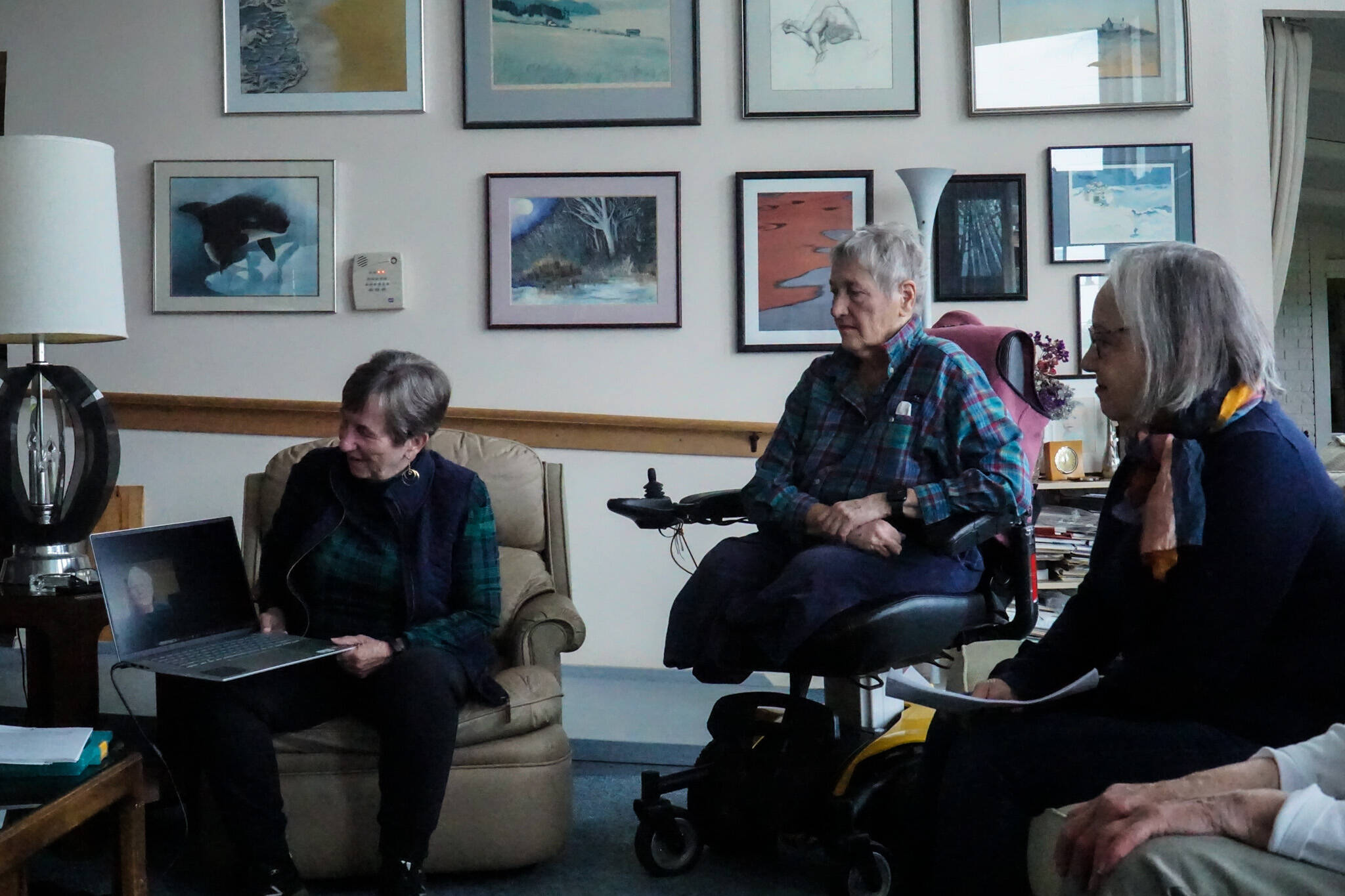Those who have yet to discover Whidbey’s gems, or lifelong islanders who want to learn something new, have the opportunity with a new book assembled by Whidbey’s longest-running writers group.
“Whidbey Island: An Insider’s Guide” binds stories and photographs of Whidbey’s landmarks, parks, businesses, beaches, town, forts, museums and more. Long-established Whidbey writers and photographers assembled for the project, such as Barb Bland who formed the Whidbey Writers Group around 1990 and Avis Rector, the great-granddaughter of Dr. John Kellogg, a Whidbey pioneer.
Bland is not certain how many books the group has put out at this point, but it could be around 15. The new travel guide is the group’s farthest venture into nonfiction. Previous anthologies compiled stories, poems and essays.
The book came by request. Longtime Whidbey Islander and writer Dan Pederson released a book called “Whidbey Island’s Special Places” in 2009, which Meg Olson of Coupeville’s Kingfisher Books sold to realtors for new homeowner gift baskets. One day, Olson suggested the writers group put out an updated book.
Authors of a wide variety of Whidbey-inspired books, memoirs, novels and essays, the group divvied the sections of the book by experience, interest or luck of the draw. Bland was once a docent at the Admiralty Head Lighthouse, so she wrote about Fort Casey and Ebey’s Prairie.
Jan Wright, author of “Dear Mrs. Wright, a Teacher’s Memoir” spoke with tourists, she said. Something that kept coming up was the ferry, so she titled her first article for the book “Getting to Whidbey Island.” Later, her article on Coupeville became her favorite piece she’s ever written.
The goal of the book is threefold, Bland said. It’s something for people to remember their time on Whidbey, a guidebook for those who are new and a coffee table book for new homeowners.
“With the photography, the book sells itself,” Rector said. “It’s really excellent.”
Despite Rector’s long history on the island, even she unearthed some new information she hadn’t known about Whidbey when researching the book. They all did.
Bland’s article begins with the death of Isaac Ebey. Prior to her move to the island, she taught Native students in southeastern Alaska. One Haida boy took her to the side one day and told her about his people’s history with headhunting, she said, which is not advertised.
In some tellings of the story, the Haida Tribe took Ebey’s head as a trophy. Bland said this is not why they took it.
“That’s what a lot of people think of because of John Wayne movies and the old understandings of plains (tribes) and so forth,” she said, “but the coastal (tribes) along here believe that all of the bones of the body have to be together, and when they are, the person can be reborn.”
The first draft of the book told a lot of Whidbey history, but in recent rewrites it took the form of a travel guide.
Since the group is used to reading each other’s writing and critiquing it regularly, the writers already knew each other’s strengths and where they might shine in the book.
“I think we all have a healthy respect for each other’s work, and that helps,” said Miriam Johnston, author of “A Petal in the Wind.”
Bill Wilson, author of “Stowaway,” said they want the reader to fall in love with Whidbey in the same way they have, but not too much. Ultimately, they want people to leave.
In the original ending, Wilson wrote, “Hope you enjoyed your stay, but don’t let the gangplank hit you on the ass on your way out.”
This was greatly softened by the final draft.
Whidbey Writers Group will be at the Emblem Club Christmas Bazaar on Saturday, Nov. 9 from 10 a.m. to 2 p.m. at the Oak Harbor Elks Club as well as The Center in Oak Harbor on Saturday, Dec. 7 from 9 a.m. to 2 p.m. “Whidbey Island: An Insider’s Guide” is also available in bookstores across the island.


